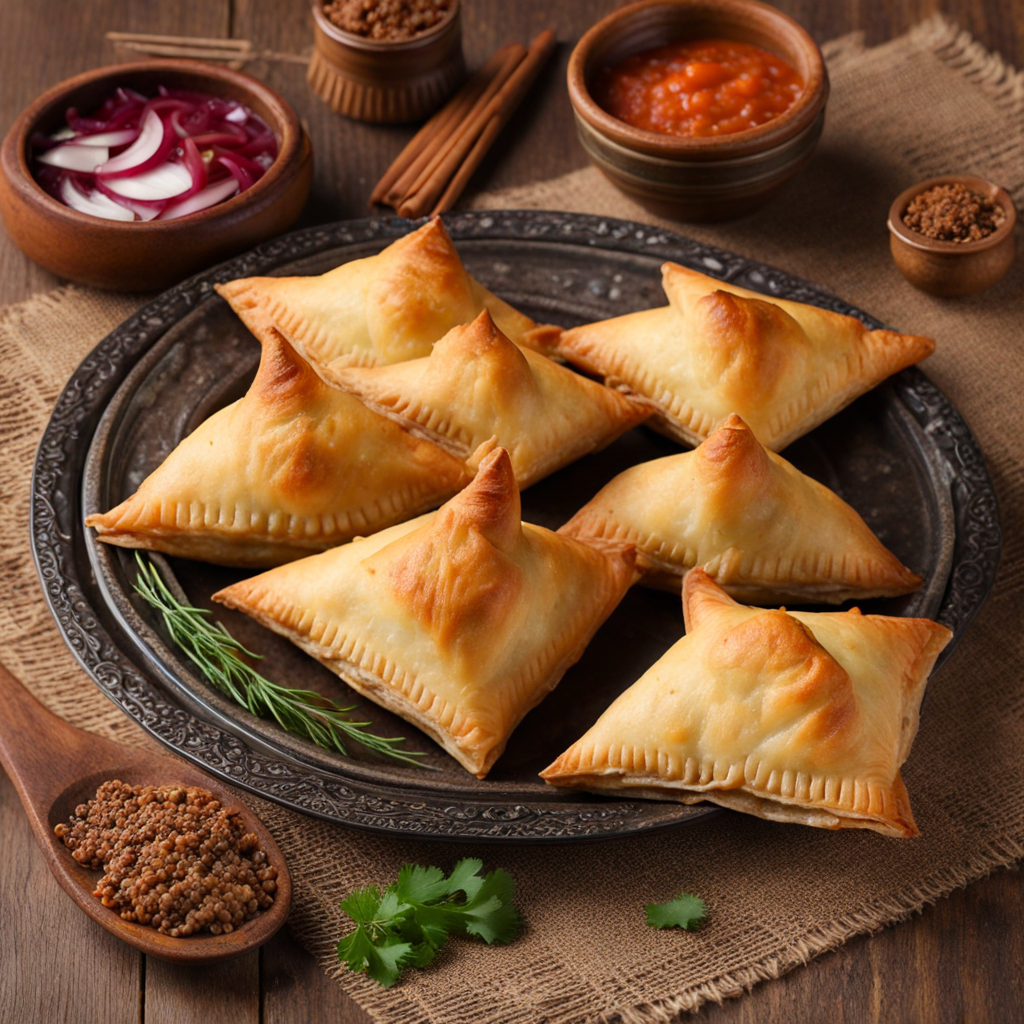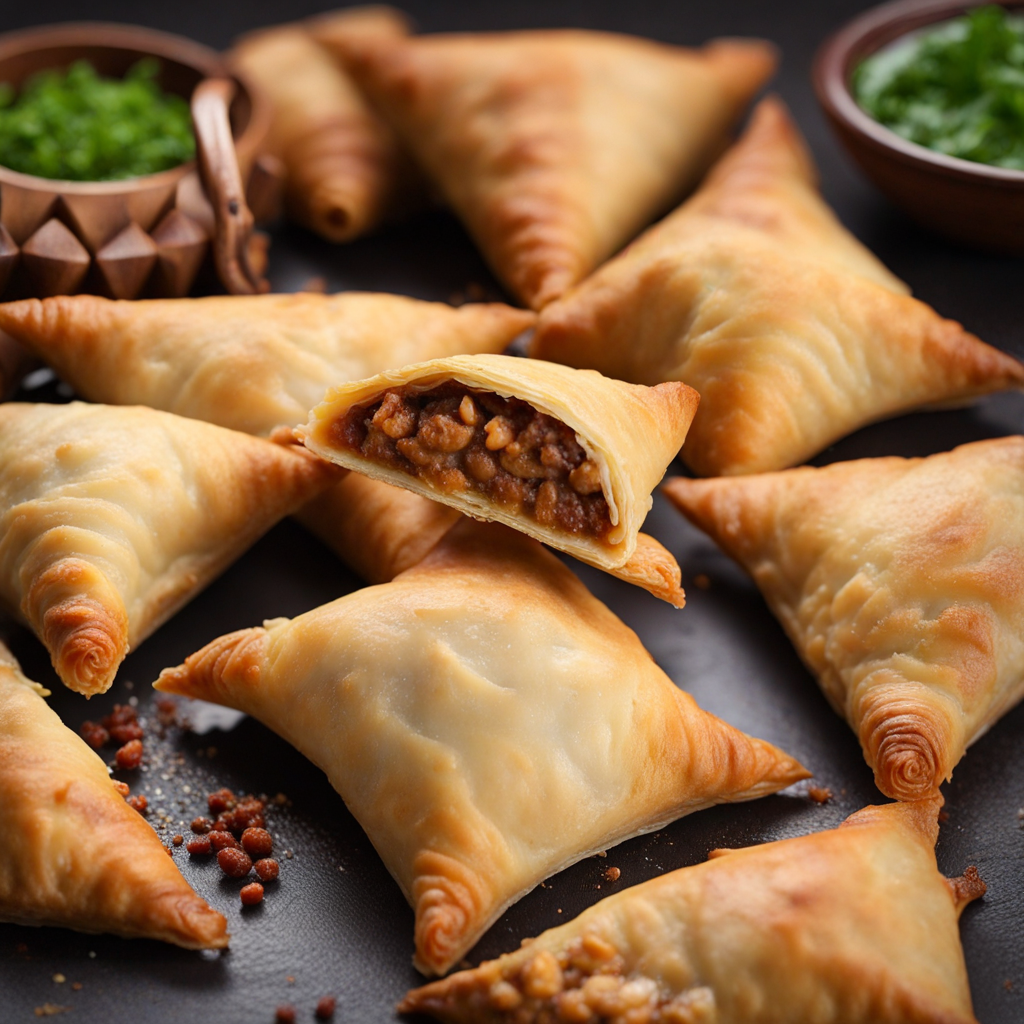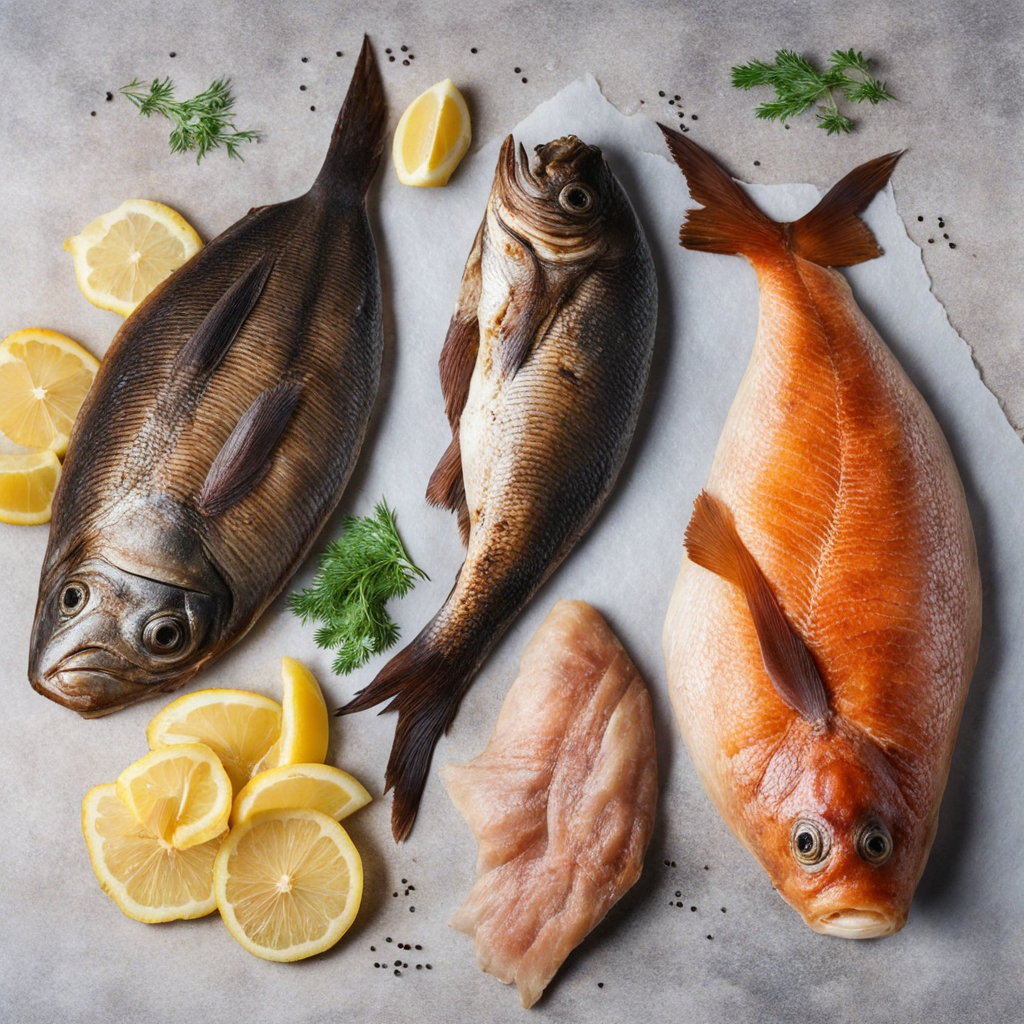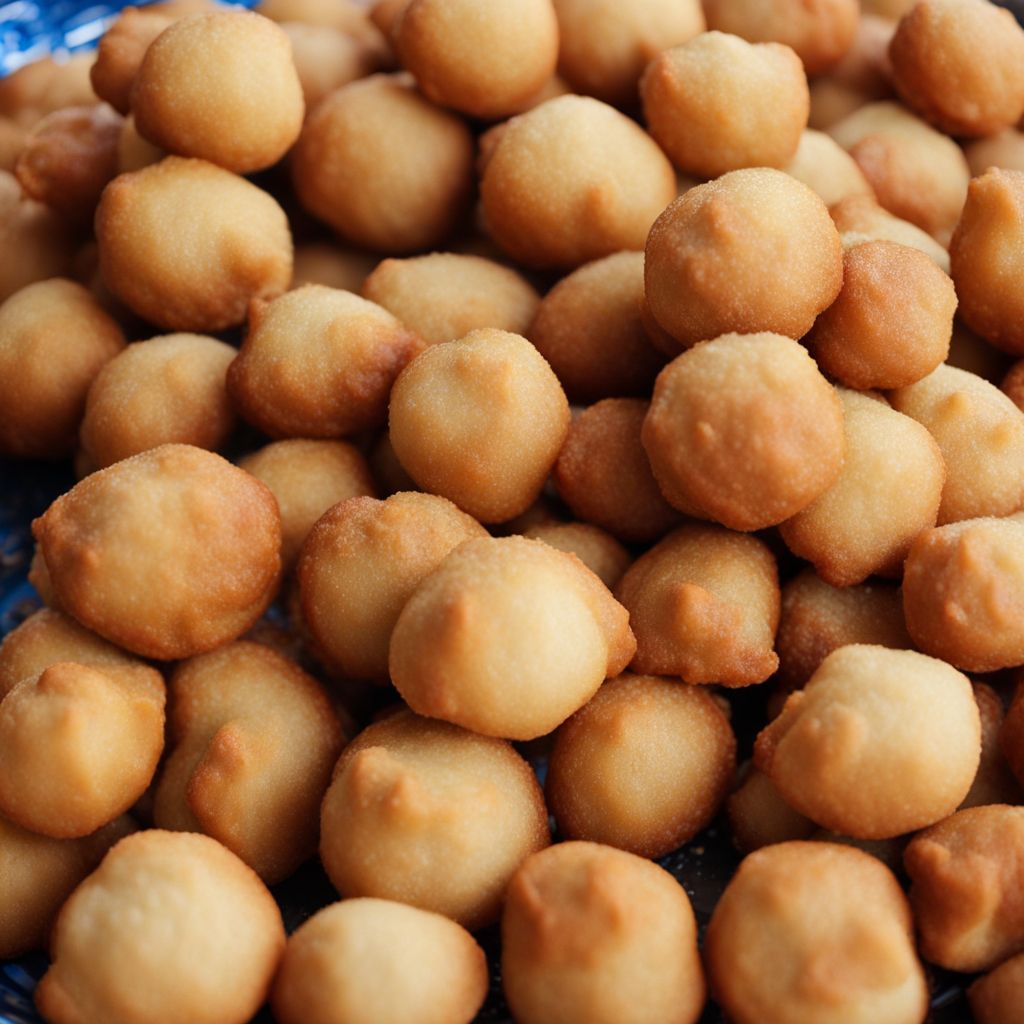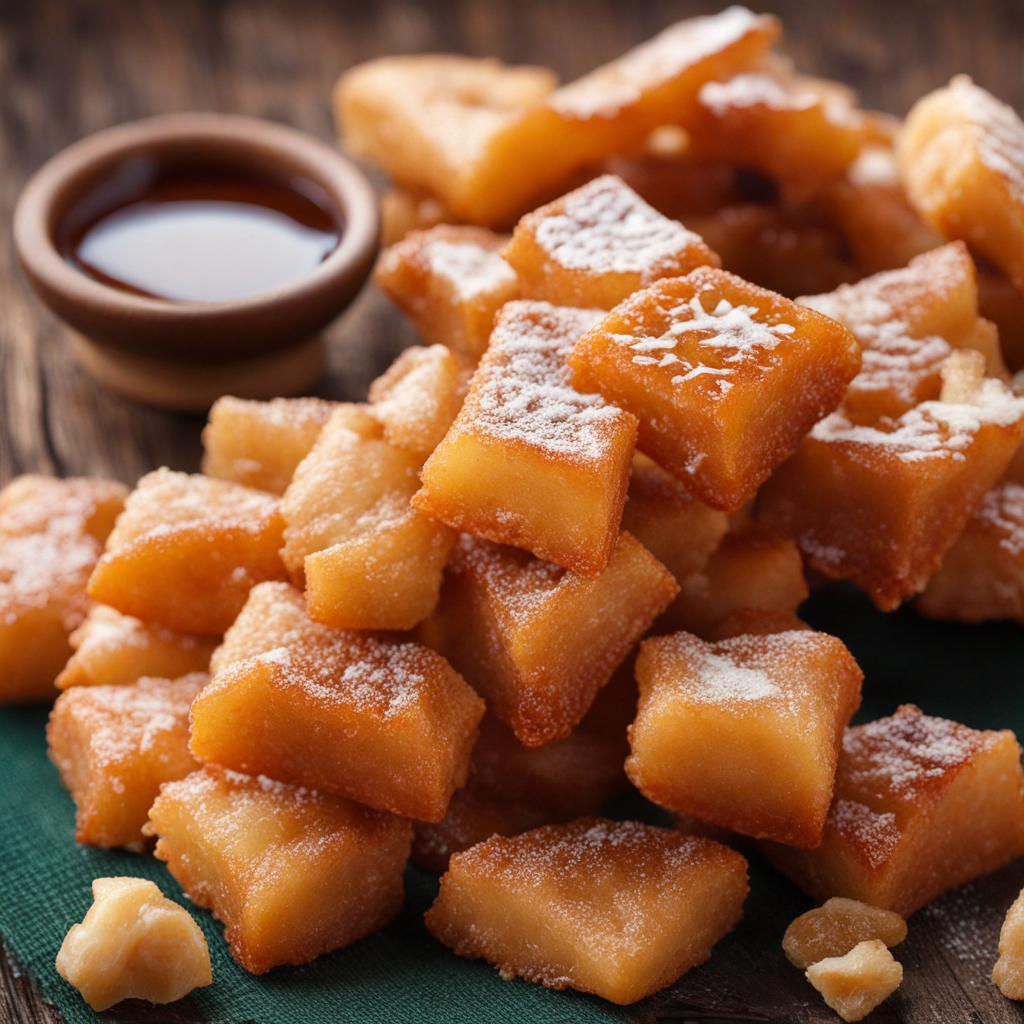Samsa
Самса, a beloved pastry in Kazakhstan, is a savory treat that showcases the rich culinary heritage of Central Asia. These delightful pastries are typically filled with meat, vegetables, or a combination of both, and are encased in a flaky, golden-brown dough. The origins of самса can be traced back to ancient trade routes and nomadic cultures, where easy-to-carry and long-lasting food was essential for travelers. This portable dish has evolved over the centuries, becoming a staple in Kazakh cuisine and a symbol of hospitality. The flavor profile of самса is a harmonious blend of spices and fillings. The most common filling is ground lamb or beef, seasoned with ingredients like onions, garlic, cumin, and black pepper. This mixture creates a savory and aromatic experience that is both comforting and satisfying. In addition to meat, vegetable variants may include potatoes, pumpkins, or carrots, often spiced with herbs such as dill or coriander. The contrast between the crispy outer crust and the juicy filling defines the eating experience, making each bite a delightful explosion of flavors. Preparation of самса involves a meticulous process that starts with the dough. Traditional recipes often call for flour, water, and salt, sometimes enriched with egg or milk for a richer texture. The dough is kneaded until smooth, then allowed to rest, which helps develop elasticity. Once rested, it is rolled out into thin sheets, which are then cut into squares or circles. The filling is placed in the center and the edges are folded
How It Became This Dish
Origin of Самса Самса, a savory pastry filled with meat and spices, has deep roots in the culinary traditions of Central Asia, particularly among the nomadic tribes of Kazakhstan. Its origins can be traced back to the ancient Silk Road, where it was a practical food choice for travelers and traders navigating the harsh terrains of the steppe. The pastry's design is said to have been influenced by various culinary practices, including those from Persian and Turkic cuisines. The name “самса” itself is derived from the Persian word "samsa," indicating its cross-cultural lineage. The basic construction of самса involves a simple dough that is rolled out and filled with a mixture typically made from lamb, beef, or sometimes chicken, along with onions and spices like cumin and black pepper. This filling is then enveloped in the dough, which is often shaped into a triangular or rectangular form before being baked in a tandoor or an oven. The cooking method not only enhances the flavors but also gives самса its distinctive crispy exterior. \n\n Cultural Significance In Kazakhstan, самса is much more than just a meal; it holds significant cultural importance. Traditionally, it is a staple at celebrations, gatherings, and family events. Its preparation often involves communal activities, where family and friends come together to make large batches, fostering a sense of unity and togetherness. During festive occasions such as Nauryz, the Persian New Year celebrated in March, самса is often featured prominently, symbolizing prosperity and the welcoming of spring. Moreover, самса serves as a representation of hospitality in Kazakh culture. It is customary to offer самса to guests as a gesture of goodwill and warmth. The act of sharing this dish reflects the values of generosity and community, which are deeply ingrained in Kazakh society. Visitors to Kazakhstan are often treated to самса as a way to experience authentic local flavors and traditions. \n\n Development Over Time As Kazakhstan has undergone various political and social changes throughout its history, so too has the recipe and significance of самса. During the Soviet era, traditional recipes were often altered to accommodate the availability of ingredients and to align with state policies on food production. This period saw a shift towards more standardized forms of самса, with many households opting for simpler fillings and mass-produced versions becoming available in markets. However, the post-Soviet period in the 1990s marked a revival of interest in traditional Kazakh cuisine, including самса. With greater access to diverse ingredients and a renewed appreciation for cultural heritage, many families returned to the traditional methods of making самса. Artisanal bakeries and local markets began to emerge, offering handcrafted самса made with high-quality ingredients, reflecting the regional variations in filling and preparation techniques. \n\n Regional Variations Throughout Kazakhstan, different regions have developed their unique takes on самса, showcasing local ingredients and culinary influences. In southern Kazakhstan, for example, самса is often filled with a mixture of lamb and pumpkin, providing a delightful contrast of flavors. In contrast, northern regions may favor beef or horse meat as the primary filling, highlighting the pastoral lifestyle and nomadic heritage of the Kazakh people. In addition to variations in meat and spices, the method of cooking самса can also differ by region. While the traditional tandoor method is still highly regarded, some urban areas have embraced modern baking techniques, using conventional ovens that yield a slightly different texture. This evolution demonstrates the adaptability of самса to contemporary culinary practices while still preserving its cultural essence. \n\n Modern Day самса In recent years, самса has gained popularity beyond Kazakhstan's borders, becoming a beloved dish in neighboring countries such as Kyrgyzstan, Uzbekistan, and Russia. The globalization of food culture has led to increased interest in Central Asian cuisine, with самса often featured in international food festivals and culinary exhibitions. This newfound recognition has allowed chefs and home cooks alike to experiment with innovative fillings, including vegetarian options, thereby broadening its appeal. Street food vendors in Kazakhstan and Central Asia have also contributed to the resurgence of самса in modern culinary scenes. The convenience of this portable snack makes it a favorite among locals and tourists alike. Vendors often serve самса hot, fresh from the oven, and pair it with traditional accompaniments like ayran (a yogurt-based drink) or spicy sauces, enhancing the overall dining experience. \n\n Conclusion Through its rich history and cultural significance, самса serves as a delicious reminder of Kazakhstan's nomadic heritage and culinary traditions. The evolution of this cherished pastry, from its ancient origins along the Silk Road to its modern-day popularity, reflects the resilience and adaptability of Kazakh culture. As самса continues to be enjoyed by new generations, it remains a symbol of hospitality, community, and the enduring spirit of a people deeply connected to their culinary roots.
You may like
Discover local flavors from Kazakhstan


